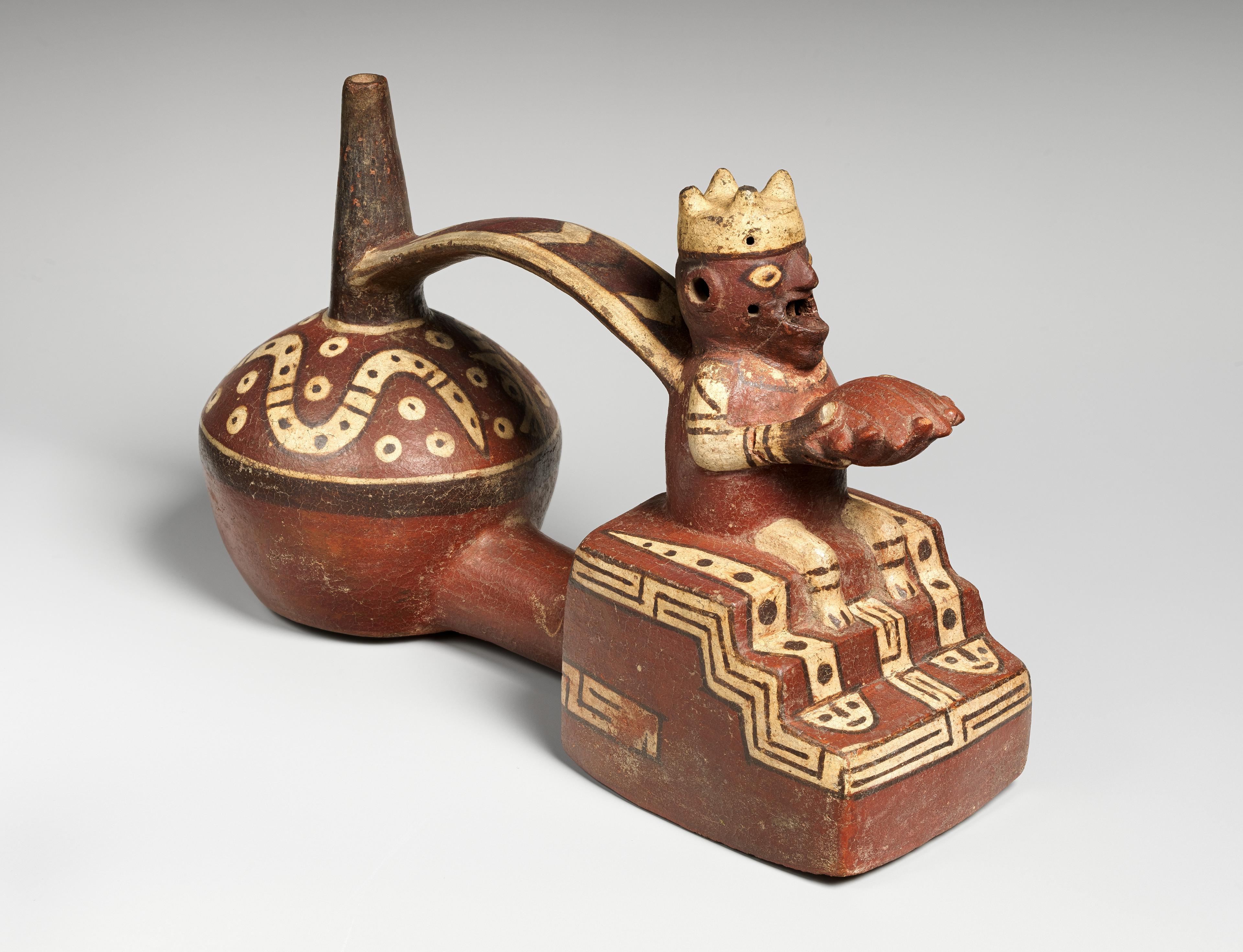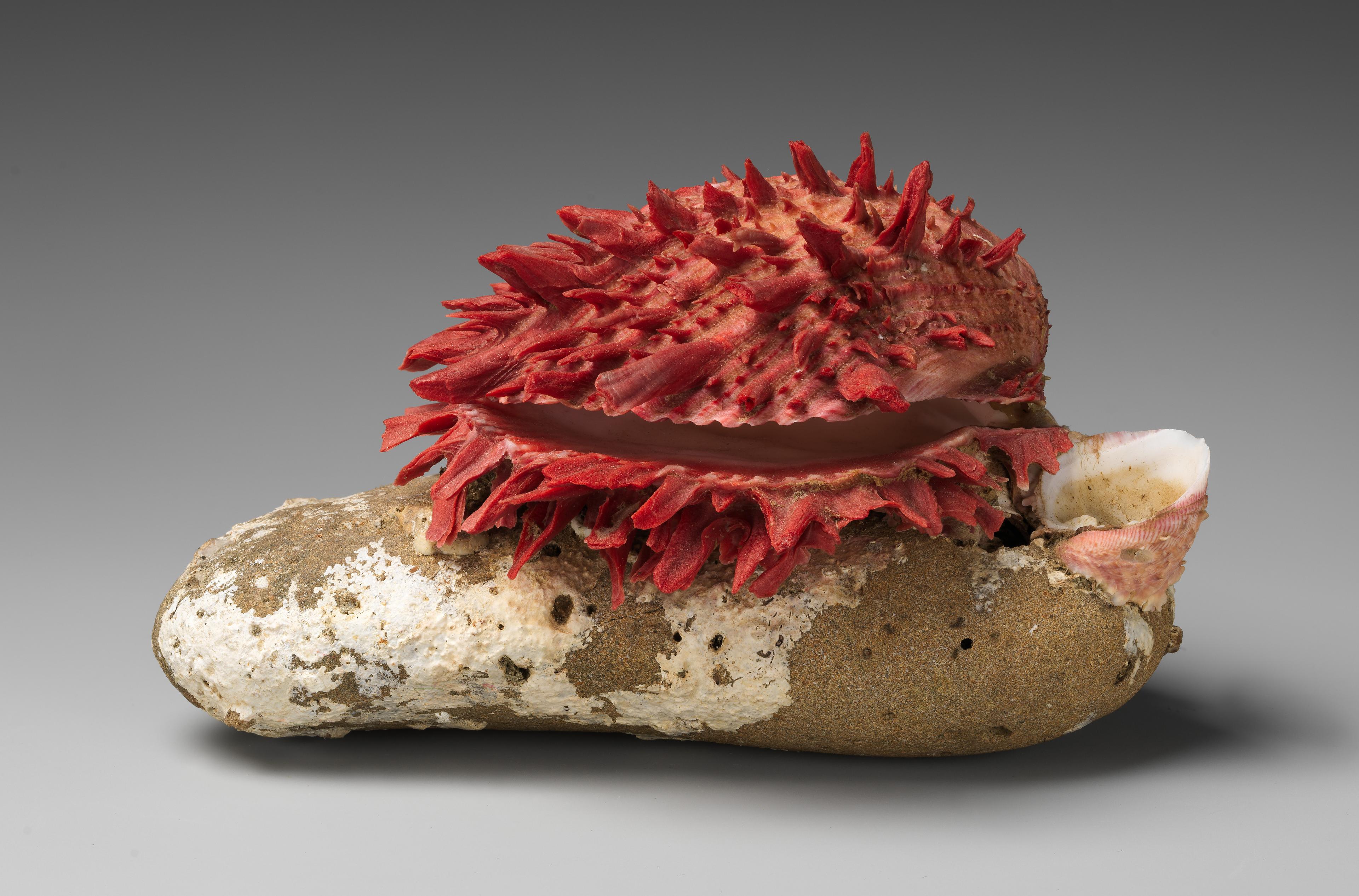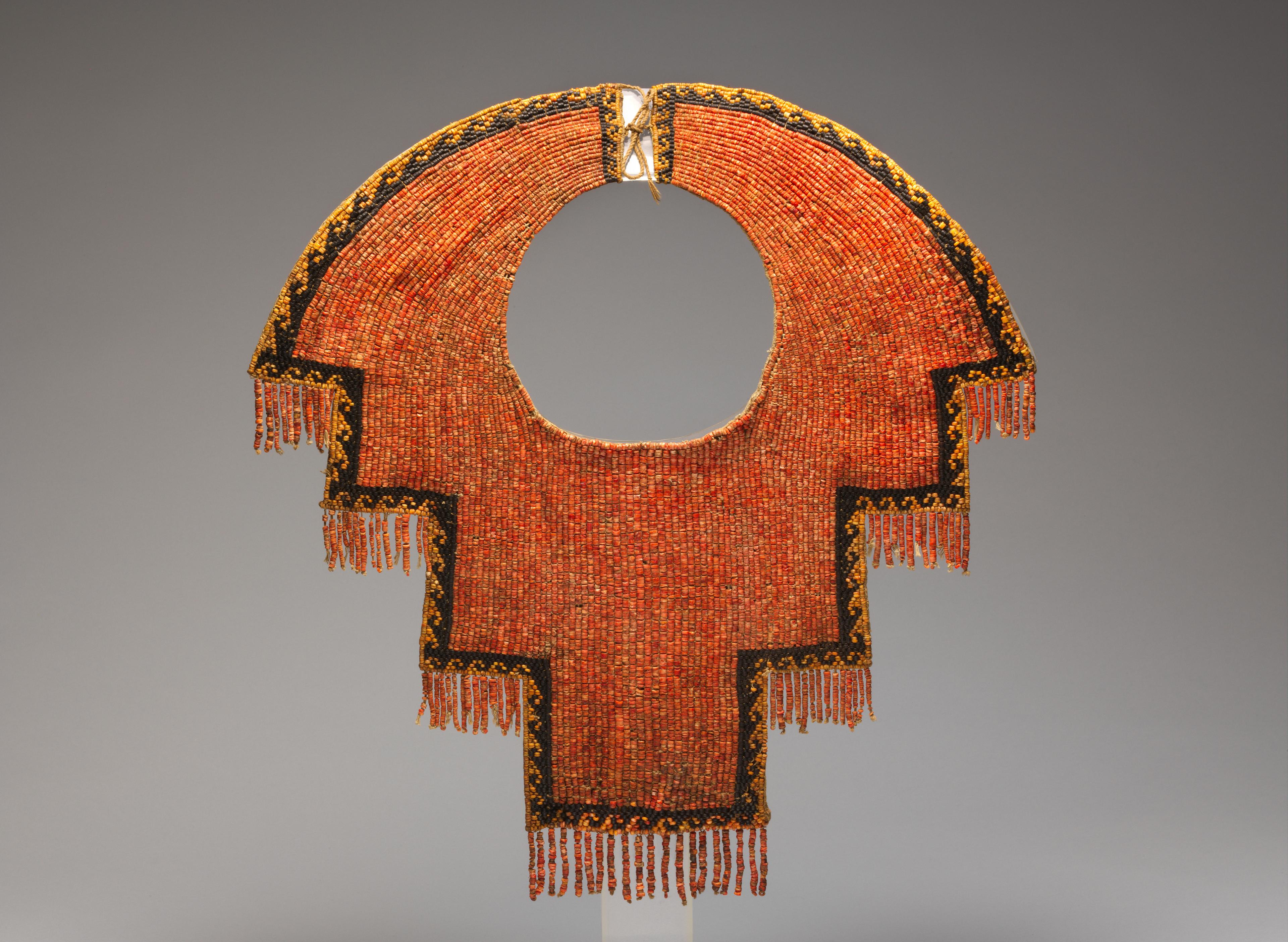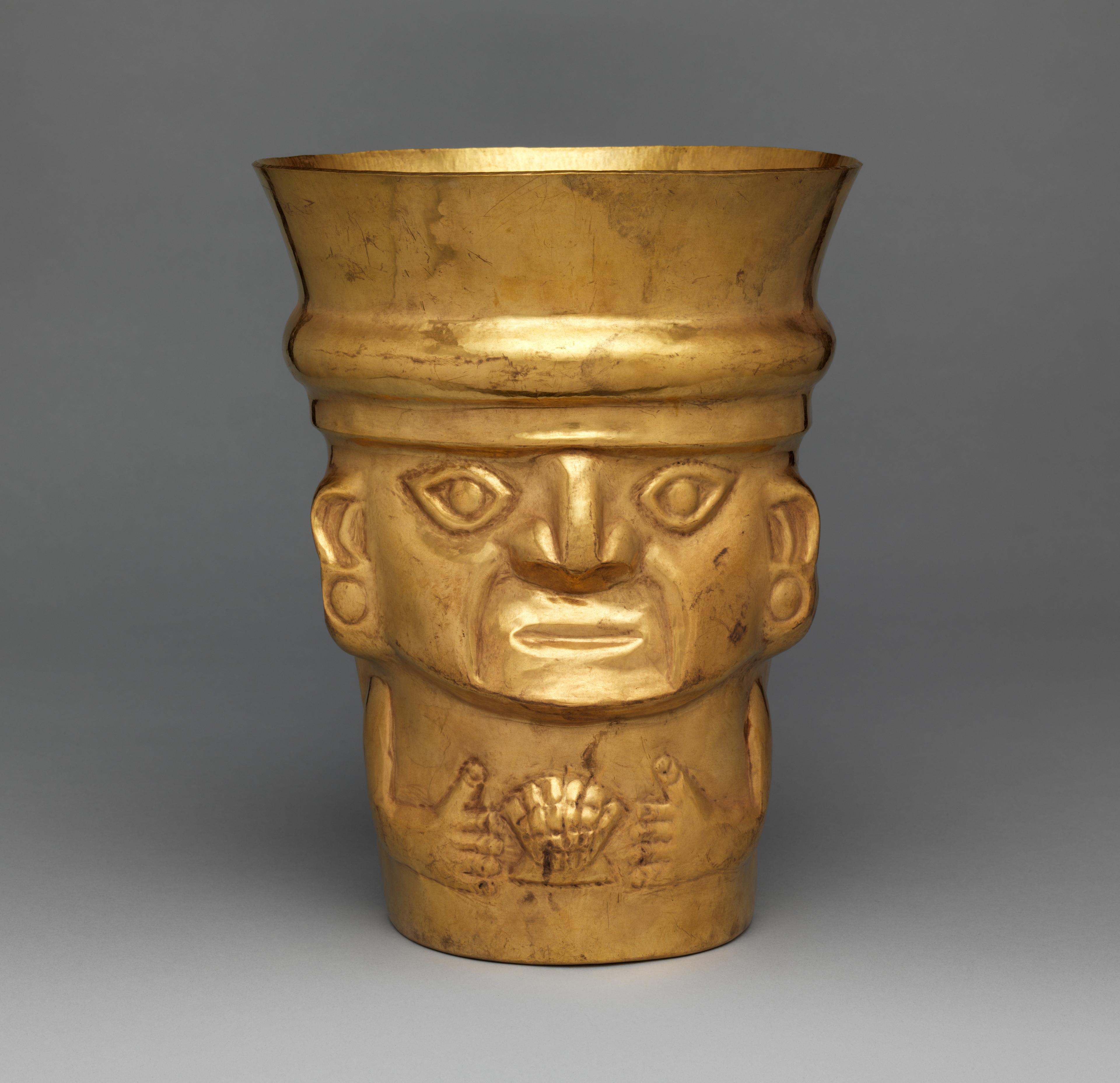
Wari artist(s). Double-chambered bottle, 800–900 CE. Peru. Ceramic, slip; H. 5 5/8 × L. 9 3/8 in. (14.3 × 23.7 cm). The Metropolitan Museum of Art, New York, Gift of Nathan Cummings, 1967 (67.167.35)
The very first European account of the lands of the Inca Empire describes a trading raft laden with riches. In 1525, Francisco Pizarro’s expedition encountered the Indigenous sailing craft off the coast of Tumbes, just south of the equator. Filled with objects of gold and silver, including crowns, diadems, belts, bracelets, leg ornaments, and breast plates, the raft's cargo also included emeralds, crystal, and amber, as well as many elaborately decorated and richly worked garments made from wool and cotton. To the astonishment of the Spaniards, these fineries were traded for coral-colored seashells, undoubtedly Spondylus, a marine bivalve known as the thorny oyster.

A Spondylus shell, attached to a rock
A fascinating double-chambered ceramic vessel made over a thousand years ago on Peru’s north coast—a few hundred kilometers from where Pizarro’s expedition encountered the trading raft—depicts a figure seated on a stepped platform, holding up a Spondylus shell. These spiky shells, which range in color from white to orange, red, or purple, were highly sought after in the ancient Americas from as far back as the first millennium BCE.
Closely associated with notions of fertility and abundance, whole valves were placed in tombs and offerings, and exquisite ornaments were made from the worked shell. The Spanish colonial administrator Pedro Sarmiento de Gamboa noted, in 1572, that in the Inca Empire, natives esteemed a “red shell”—undoubtedly Spondylus—more than silver or gold.

Chimú artist(s). Collar, 12th–14th century. Peru. Spondylus shell and black stone beads, cotton; H. 17 1/2 x W. 15 in. (44.5 x 38.1 cm). The Metropolitan Museum of Art, New York, Purchase, Nathan Cummings Gift, and Rogers Fund, 2003 (2003.169)
Ancient Andean artists depicted Spondylus with some frequency, and often in the hands of powerful figures. Referred to as “the daughters of the sea, the mother of all waters,” these shells were deposited in springs, wells, and other sources of water to ensure a continued supply of life-giving water. Spondylus valves were also used as offerings in agricultural fields in the hope of promoting an abundant harvest.
The value of Spondylus in Peru was in part due to its rarity, and the difficulty of acquiring complete, bright specimens. The rich Humboldt Current off the coast of Peru provides an impressive array of marine wildlife, but Spondylus shells were generally not found there; rather, they had to be imported from Ecuador or farther north, where the bivalve thrived in the warmer tropical waters. The finest shells were harvested from beds some five to twenty meters deep, an impressive dive in an era before the invention of diving tanks.

Lambayeque artist. Beaker with figure and Spondylus shell, 10th–11th century. Peru. Gold, H. 10 3/8 x D. 8 in. (26.4 x 20.3 cm). The Metropolitan Museum of Art, New York, Jan Mitchell and Sons Collection, Gift of Jan Mitchell, 1991 (1991.419.62)
But why this interest in depicting Spondylus in the arts of Peru’s north coast? Surely not because it was good to eat. Indeed, thorny oysters can be a risky proposition as a foodstuff, at least for mortals, as it is seasonally toxic and could cause visions, convulsions, or even death if eaten at the wrong time of the year. Gods, however, could eat them. In one passage from the Huarochirí manuscript, first transcribed in 1598, an Inca ruler pleads for supernatural intervention in battle, and offers gold, silver, cloth, and food. The divinity Maca Uisa then replies, “I am not in the habit of eating food like this: bring me some thorny oyster shells.” As soon as the Inca ruler brought him the shells, Maca Uisa ate them all at once, making them crunch with a “cap-cap” sound.
The striking morphology of the Spondylus may have strengthened this divine association. From its fearsome spikes and bright color to the light-sensitive eyes in the pallial folds of a living specimen, its own form may have contributed to its special standing in the ancient Americas. The knowledge of such eyes, and of the bivalve’s abilities of perception and vision, may have made it a particularly good symbol for divine vision or oracular power.
Closely linked to divine powers, and the bounty such powers could bestow—or withhold—these daughters of the sea were seen as crucial to agricultural fertility in the ancient Andes. Particularly in a region that had known both severe drought but also ruinous floods, they were a thorny wedge against the capricious forces of nature and the gods.